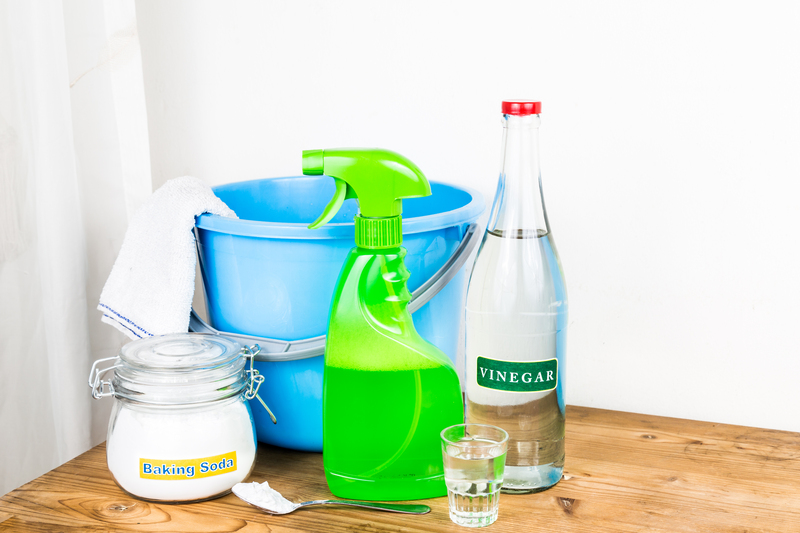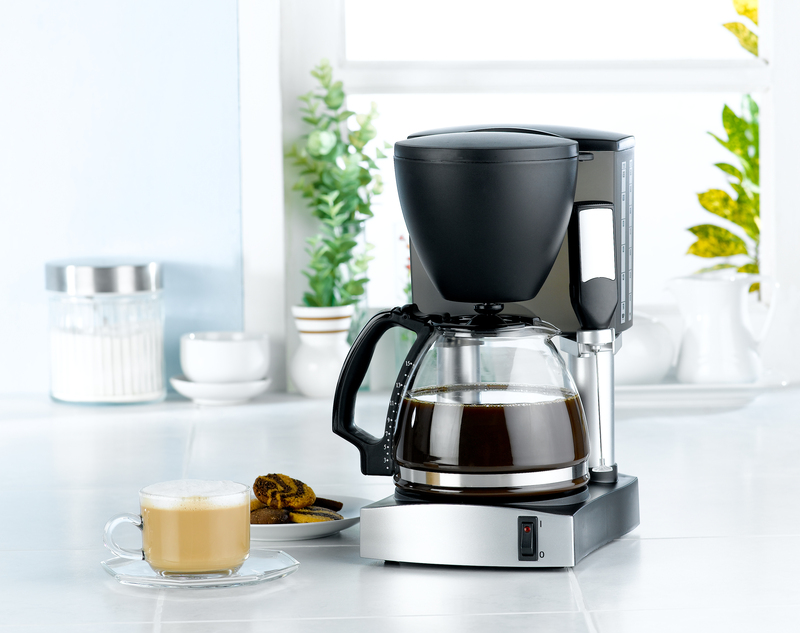Effective ways to prevent and clean window sill mould
Posted on 27/09/2025
Effective Ways to Prevent and Clean Window Sill Mould
Window sill mould is more than just an unsightly nuisance--it can pose real risks to your health and damage the structural integrity of your home. Successfully preventing and cleaning mould on window sills requires understanding its causes, using proven cleaning methods, and implementing long-term prevention strategies. In this comprehensive guide, you'll discover the most effective ways to prevent and clean window sill mould, maintain a healthy home, and enjoy sparkling clean windows year-round!

Understanding Window Sill Mould: Causes and Risks
Before exploring how to prevent and remove mould from window sills, it's essential to understand why it develops in the first place and the potential dangers associated with it.
What Causes Mould on Window Sills?
- Excess Moisture: Condensation from humidity, cooking, or showering can accumulate on window panes and drip down to the sills, creating a damp environment perfect for mould growth.
- Poor Ventilation: Closed spaces with limited air circulation trap moisture inside, accelerating mould formation.
- Leaks: Faulty window seals, damaged frames, or roof leaks can let water seep into walls and sills.
- Organic Matter Accumulation: Dust and debris on sills serve as food sources for mould spores.
Health Risks Associated with Mould
Prolonged exposure to window sill mould can cause:
- Allergic reactions, such as sneezing, coughing, and skin irritation
- Aggravation of respiratory issues, especially in those with asthma or allergies
- Headaches and eye irritation
- Potential for more serious illness in individuals with weakened immune systems
That's why it's vital to clean and prevent window sill mould promptly and effectively!
Top Methods to Clean Window Sill Mould
Ready to tackle the problem head-on? Here are the most effective ways to clean window sill mould for a healthier, fresher home:
1. Gather Necessary Supplies
- Protective gloves and mask
- Microfiber cloths or sponges
- Scrub brush or old toothbrush
- Spray bottle
- Cleaning solution:
- White vinegar
- Hydrogen peroxide (for tough mould)
- Mild detergent and water
- Baking soda (optional for deodorizing)
2. Ventilate and Prepare the Area
- Open windows and doors to allow fresh air in and prevent inhaling mould spores.
- Lay old towels or plastic sheets to protect your floor from drips or spills.
- Wear protective gear to safeguard your skin and lungs.
3. Remove Excess Mould
First, dry-clean the area:
- Use a dry cloth or paper towel to wipe away visible mould colonies and debris.
- Dispose of used cloths in a sealed bag to prevent spreading spores.
4. Apply the Cleaning Solution
For Light to Moderate Mould Growth:
- Pour undiluted white vinegar or hydrogen peroxide into a spray bottle.
- Generously spritz the affected area.
- Let the solution sit for at least 15 minutes to break down mould spores.
Tip: Never mix vinegar and hydrogen peroxide together!
5. Scrub Away the Mould
- With a scrub brush, gently work the solution into the sill's surface, scrubbing all nooks and crannies.
- For hard-to-reach spots, use an old toothbrush for precision cleaning.
6. Rinse and Dry
- Wipe the surface with a clean, damp cloth to remove residue.
- Dry the area thoroughly with a fresh towel to prevent further dampness.
7. Neutralize Lingering Odours
- Sprinkle baking soda over the cleaned sill, leave for 10 minutes, then vacuum or wipe away.
Repeat cleaning weekly or as needed for persistent problems.
Preventative Strategies: How to Keep Window Sills Mould-Free
Ongoing prevention is the best way to avoid the need for repeated cleaning. Here we outline effective ways to prevent window sill mould for the long term.
Improving Ventilation
- Open windows regularly to increase air flow, particularly after cooking or showering.
- Use exhaust fans in bathrooms and kitchens to expel humid air.
- Install trickle vents or a dehumidifier in rooms prone to condensation.
Did you know? Keeping indoor humidity between 30-50% makes it harder for mould to thrive.
Control Moisture and Condensation
- Wipe down window sills and frames after rain or in the morning if condensation forms overnight.
- Arrange furniture and curtains away from windows to allow air circulation.
- Keep plants from resting directly on sills, as they can add extra moisture.
Check and Repair Leaks Promptly
- Inspect window seals, frames, and the adjacent wall periodically for signs of leaks.
- Reseal or repair damaged caulking to prevent water ingress.
- Address roof or gutter leaks quickly to avoid water seeping down to windows.
Regular Cleaning and Maintenance
- Vacuum or dust window sills weekly to remove organic debris and dust.
- Once a month, wipe sills with a vinegar/water solution as a preventative measure.
- Inspect for early signs of mould growth, such as musty smells or discoloration, and treat immediately.
Use Mould-Resistant Treatments
- Apply a mould-resistant primer or paint to window sills, especially in humid areas.
- Consider anti-mould sprays or sealants for extra protection in bathrooms and kitchens.
Natural Approaches to Prevent Window Sill Mould
- Essential oils such as tea tree oil and clove oil have natural antifungal properties. Add a few drops to your cleaning routine for an extra mould-fighting boost.
- Invest in moisture-absorbing products like silica gel packets or activated charcoal for window areas prone to dampness.
Frequently Asked Questions about Cleaning and Preventing Window Sill Mould
How often should I check for and clean window sill mould?
Ideally, inspect window sills at least once a month, especially in humid seasons or after heavy rain. Regular cleaning (every 2-4 weeks) prevents spores from settling and multiplying.
Can I use bleach to clean mouldy window sills?
While bleach is effective at killing surface mould, it may not penetrate porous materials like wood. Vinegar or hydrogen peroxide are safer, eco-friendly alternatives for window sill mould removal. Reserve bleach for non-porous surfaces and always use with caution.
What should I do if mould keeps returning on my window sills?
Persistent mould likely indicates an ongoing moisture issue. Double-check for leaks, condensation, or lack of ventilation. Consider consulting a professional if the problem persists or covers large areas.
Is window sill mould dangerous to pets?
Yes! Mould spores can negatively affect pets, especially those with allergies. Thoroughly clean suspect areas and keep pets away during intensive cleaning.

When to Seek Professional Help
Home cleaning and prevention steps work for minor to moderate mould infestations. However, professional mould removal is necessary when:
- The area affected is larger than 1 square metre
- Mould recurs despite your best efforts
- You notice structural damage to sills or surrounding walls
- Family members experience ongoing health symptoms
Qualified experts can identify hidden moisture sources and use specialized treatments to remove and prevent further growth.
Conclusion: Your Action Plan for Mould-Free Window Sills
Mould on window sills doesn't have to be a persistent problem. By applying effective ways to prevent and clean window sill mould, such as improving ventilation, controlling moisture, fixing leaks, regular cleaning, and using proven cleaning solutions, you can maintain a healthy, attractive home environment.
- Act quickly at the first sign of window sill mould
- Use safe, effective cleaning solutions (like vinegar and hydrogen peroxide)
- Keep moisture and humidity under control for long-term prevention
- Utilize mould-resistant materials and maintenance routines
With these steps, you'll not only remove mould from your window sills but also keep it from coming back!
For more home maintenance tips and mould prevention guides, bookmark this article and share it with others seeking healthier, cleaner living spaces. Your window sills--and your lungs--will thank you!




